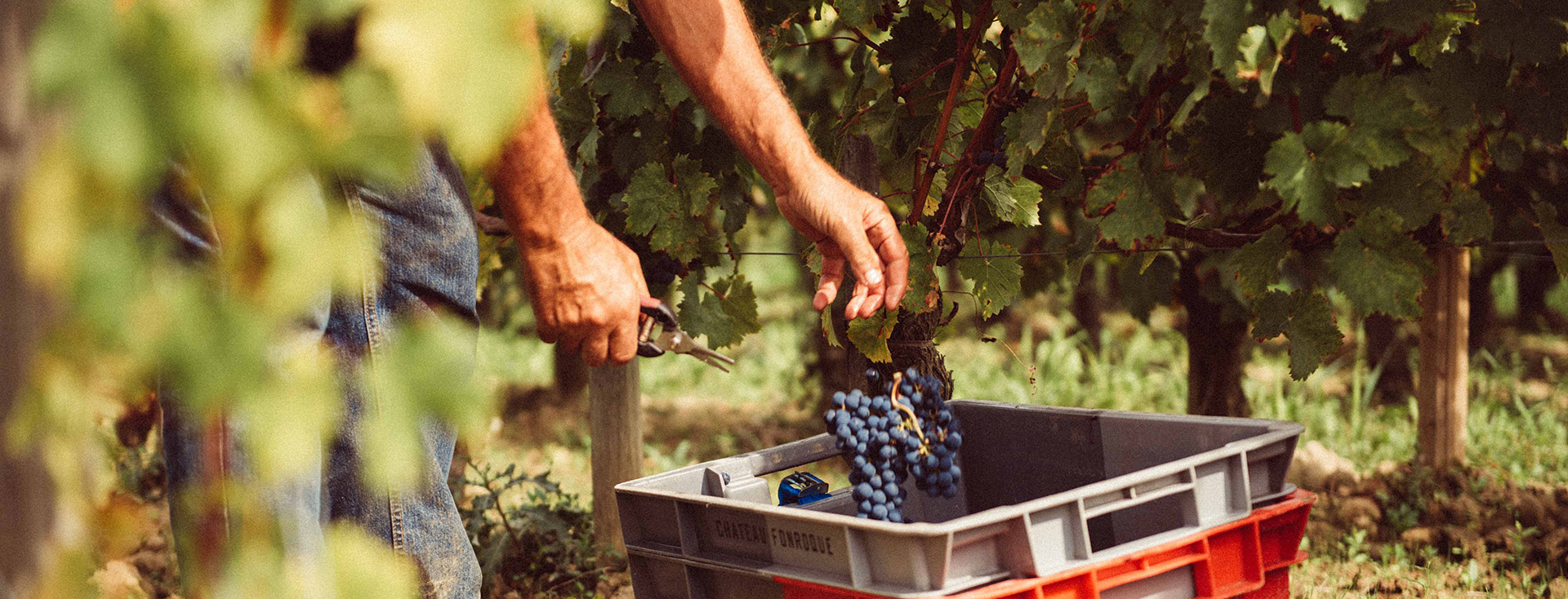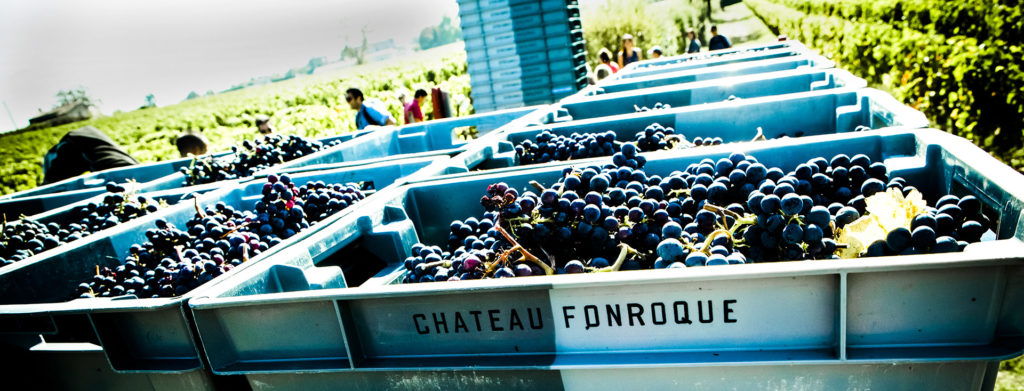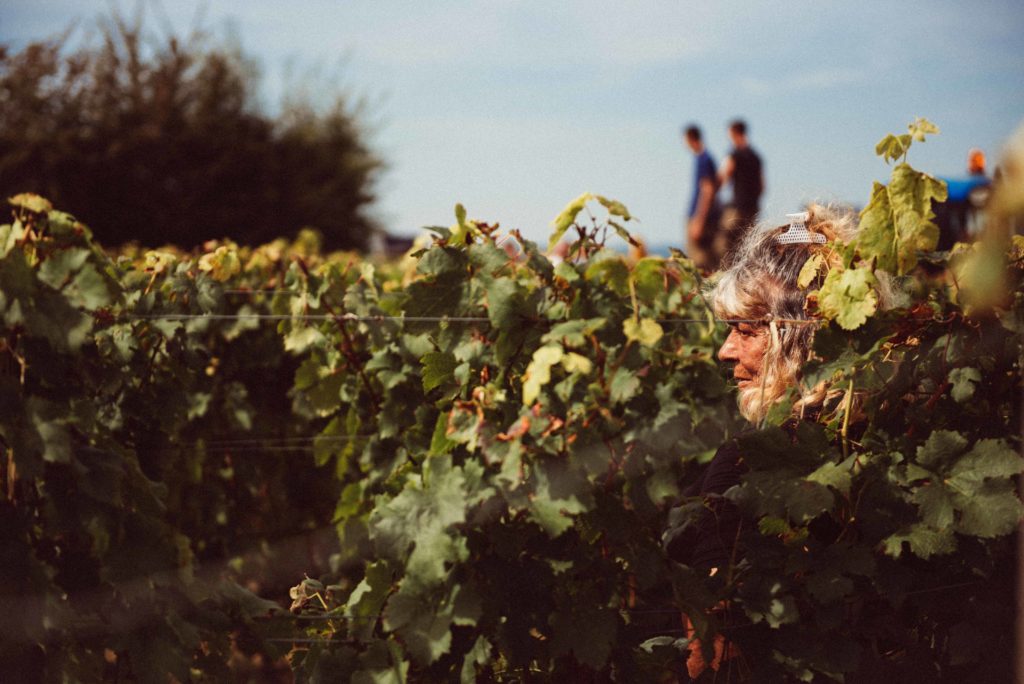“When I begin a new canvas I have a certain idea of what I want to do, but while I’m painting, suddenly, out of the painting itself, these forms and directions that I hadn’t anticipated just appear. It is these that I call accidents. It seems to me that in painting, and perhaps also in the other arts, there’s always an element of control and an element of surprise.” Francis Bacon

HARVEST
Comments
“These words, which hold true for artists of all disciplines, often inspire my daily work. An accident serves as a break with prescribed elements that pull us away from surprising perspectives and moments of grace. In my view, it is vital to accept this leap into the unknown.
Harvests also have their random side. The story begins in late August and early September, as everyone is returning from holiday. We start to talk about the harvest and prepare the sorting equipment. We discuss our teams, and this preparatory work begins to produce a preconceived idea of what will happen. This is based on the climate of the year and the anticipated harvest volumes, which gradually become more precise, and this data supports the empirical side of our expertise. This anticipatory architecture is necessary, but has to remain very flexible.
In early September, Laurent Nougaro at Fonroque or Ludovic Guibert at Mazeyres and myself start picking a few grapes for analysis. We then compare these results with those from previous years to gain a more precise individual profile of the vintage. We measure the sugar and thus potential alcohol level, the total acidity, the pH and the weight of a hundred grapes, which gives us an idea of the average grape size. We monitor the balance. If you compared this stage to the work of a painter, I would say that it is like choosing the canvas.
These elements start to give us an idea of what the harvest date will be. This provisional information is already influenced by the flowering, mid-flowering and mid-veraison dates. These are precise benchmarks covering a period of around ten days. However, they need to be carefully adjusted, as some vintages of course defy these markers or reveal their limits. In 2003, for example, the period between mid-veraison and ripeness was shortened by searing heat. However, in general terms we can position harvests in the period between mid-September and mid-October. The next step is to taste the grapes.

Every day we wander from plot to plot, taking with us all that we know about each one – it’s history, potential, characteristics, and energy and biological status – so that they are perceived by our senses and fixed in our memories. We gather information that will be combined in equal measure with our pragmatism and intuition. I set great store by peripheral signals that enable us to achieve extremely subtle results. Our instincts take hold and offer us a generous supply of the immeasurable. All of this gradually gives us an idea of the vintage’s profile. Are the vines lively or are they showing signs of entering the autumnal stage? Are the grapes fruity? Do they have beautiful acidity providing radiance? Are things a little jammy following a hot summer? Each piece of data provides us with information about what we should showcase or reduce, what we should extract and how much, what we should use or lessen to enhance the final result. To continue the painting metaphor, this stage is choosing the paint, but images are coming to the painter and striving to reach the canvas.
We also monitor the balance of the ripening process. If the skins are ripe, are the pips ripe as well? What level of colour extraction occurs when you crush the skins? Do the grapes separate easily from the stems? Is the tiny stem that remains behind once the grapes are harvested red or not? Are the stems lignified or are they still green? This information and these balancing acts are different every year, and require tailored responses. A dynamic observation of these elements is what points us in one direction or another. You also have to spend a lot of time listening to the views of people working the soil, and keep an eye on yourself. Although we note down analysis results every day, all of the other information collected remains a living entity and together represents experience that is not documented anywhere. Everyone gathers their own elements based on their particular sensitivity and skills. This spontaneous attitude has always been our mindset at Mazeyres and Fonroque, and cannot be far removed from that of the farmers of yesteryear or nomads who, for different reasons, did not use written texts to record or pass on information.
I am very attached to the volatile element of experience that can only be gained with the passing of time, often in an unconscious way. It increases trust in a bank of memory that pulls us together. Here, the painter’s hands clasped on his tools already create an atmosphere of shapes and colours, a heralding soul.

This is how we approach a (still approximate and mobile) date for the beginning of the harvest. It can of course change depending on the weather, which provides instant information that will prompt us to start or delay work. We reduce but continue to monitor analyses and their pace of growth, both for our personal use and to meet the requirements of the ODG (Organisation for Defence and Management of the Appellation, formerly the Syndicat Viticole). However, the final part of the process, with the harvests just around the corner, is to taste the grapes – the most reliable and decisive factor in our decision-making. We are out and about early in the morning every day, when temperatures are still cool. Our gut and our unconscious mind play a key role.
We feel the days piling up, and finally the day comes when I think that we should act. The fruit is present and vibrant. The skins are supple and the pips have an almond flavour. The troops can be called in for the following day. At this stage, the painter is at the heart of their painting and already knows what it will look like, even if it is not yet visible to anyone else.
On the first day, the grape pickers arrive early enough to sign contracts and receive their organisational and safety briefings. Energy levels are high and everyone wants to get harvesting. Then the picking begins. The grapes are placed carefully in crates around thirty litres in size. They have to arrive at the entrance to the vat house ready for sorting without having been damaged along the way. We remove all of the plant matter and release the many insects that have been caught up in the picking process. The bunches are placed on a vibrating table and then in a destemmer to separate the grapes from their wooden framework. The grapes are then sorted using various mechanical systems, but the final pass is always a visual one by a human. It is important not to rush the grapes, as they are vessels of memory and will show us the same respect when the time comes. This need for a delicate touch is widely understood, even by temporary workers. I like to think that this real care and attention paid to picking and sorting is not really viewed as a constraint, but rather something that wonderfully colours the existence of the people providing it.
The grapes are then transported to the vats.
The winemaking adventure can begin.”
Alain Moueix



